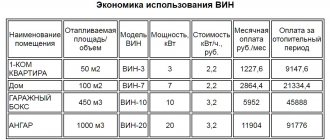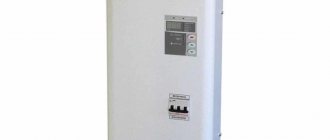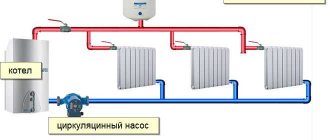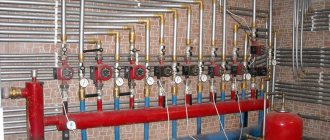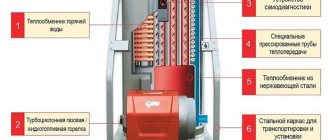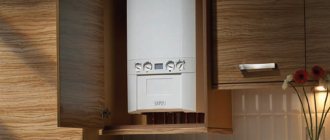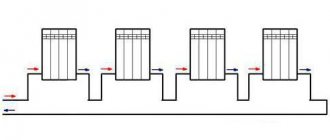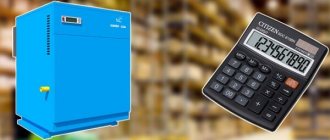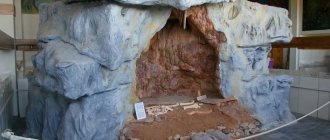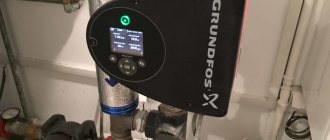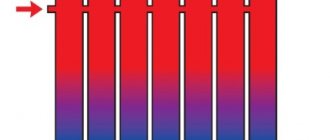Owners of private houses who use solid fuel stoves for heating are well aware of the problem of cooling down the home after the firewood or coal has completely burned out. This happens at night or in the absence of the owners, when there is no one to throw new logs into the firebox. The issue can be resolved in several ways:
- use a combined wood-electric heating boiler;
- install 2 separate heat sources - solid fuel and electric;
- do not mess with electricity and install a long-burning wood-burning boiler.
We suggest that you consider the listed options in detail in order to choose the most comfortable method of heating a country house.
Application of combi boilers
Heat generators operating on various energy sources did not appear yesterday. Since the times of the USSR, “dual-fuel” gas-wood boilers have been known; in them, to switch to wood, the burner device had to be removed. In modern heating units, solid fuel is combined not only with gas, but also with electricity, which is more important for users. A homeowner who decides to buy a heating boiler using wood and electricity solves several issues in one fell swoop:
- It uses two energy carriers for heating, alternative to natural gas.
- Eliminates cooling of the premises of a private house when the contents of the firebox are completely burned and a new portion of coal or firewood is not loaded.
- Increases the convenience of using water heating, since you no longer need to get up in the middle of the night and run to the boiler room.
Construction of an electric wood-burning boiler "Kupper" from
New generation combined heat generators are designed in such a way that electric heating is switched on automatically when the water in the boiler tank begins to cool. Switching back to wood burning without the intervention of the owner of the house is impossible.
The principle of operation of an electric wood-burning boiler
The design of this type of heater is similar to that of a traditional solid fuel boiler, consisting of the following main elements:
- combustion chamber (firebox), where logs and coal are loaded;
- from the outside it is washed by a coolant enclosed inside a water jacket;
- a fire-tube or water-tube heat exchanger, where combustion products give off most of the heat to water before being released out through the chimney;
- the grate is located at the bottom of the firebox, and under it there is an ash chamber;
- the firebox and ash pan at the front are equipped with doors;
- To change the combustion intensity in the heat generator, a mechanical draft regulator or a fan - air blower is used (if manual control of the air damper is not provided).
Scheme of the Kuper-Carbo mine-type electric-coal heat generator
Domestic combined heating boilers are distinguished by the design of their water jacket, which provides space for installing a block of tubular electric heaters - heating elements. The heating part of the element is immersed in the coolant, and the contacts are brought out and connected by cable to the control panel.
The operating algorithm of a solid fuel heater equipped with electric heaters looks like this:
- The boiler is fired and heated as usual. While the wood is burning, the temperature of the coolant is maintained by a mechanical thermostat or a fan together with a sensor, and the heating elements are inactive.
- After the contents of the firebox burn out, the water in the system begins to cool, which is recorded by the temperature sensor. When the coolant has cooled to a certain point, the sensor signal will turn on the heating element (one or more). From this moment on, the boiler switches to electricity.
- After loading the next portion of solid fuel, the coolant is heated from the side of the combustion chamber, and the electrical part is automatically turned off until the next time it cools down.
The heater control unit can maintain a certain water temperature, based on the readings of a water or air sensor.
The transition from one mode to another allows for continuous heating of water, which is what the inhabitants of a private house require for comfort.
Pros and cons of universal heat generators
By installing a combination boiler for heating a private house with wood and electricity, you receive the following bonuses:
- Thanks to the built-in heating elements, water heating will continue to function after the main firebox goes out. This will keep the house warm, and during your absence will prevent pipes and heating radiators from defrosting.
- Comfort. Supporting the heating of the system with electricity will save you from night trips to the boiler room to lay logs.
- If electricity metering is carried out according to a multi-tariff scheme, then in addition to convenience you will receive savings from the operation of heating elements at night.
Electric heaters of a combined boiler are designed only to maintain the temperature of the water in the system; they cannot fully replace the combustion of solid fuel. The reason is the insufficient power of the heating element unit installed by manufacturers on TT boilers.
Example: all “Kupper” units of the famous Russian brand “Teplodar” with a power of 9...20 kW have the same electric heaters with a heat output of 6 kW.
This is what a 6 kW heating element block looks like, used in Russian-made Teplodar, Prometheus and ZOTA wood-burning heaters
This feature of combined heat generators can easily be considered a disadvantage. The exception is low-power heaters (the same “Cooper” 9 kW with 6 kW heating elements), purchased for small-sized dwellings (up to 100 m²). In this case, the heat transfer from electricity is comparable to burning wood, so in moderately cold weather (down to about -5 °C outside), the heaters are able to completely heat a modest-sized house.
Another important point. Like a conventional solid fuel heater, a wood-electric combination boiler should be connected to the water heating through a three-way valve, as shown in the diagram below. A small circulation circuit serves to protect the firebox from the harmful effects of condensate during kindling.
To prevent condensation from appearing on the walls of the combustion chamber due to temperature changes, the TT boiler must be connected according to the standard circuit with a three-way valve
If the power of the heating elements is enough to heat the coolant to a temperature of +55 °C and above, then condensation will never form in the combustion chamber of the combined boiler during lighting, and the unit with a three-way mixing valve becomes seemingly irrelevant. In reality, a small circulation circuit is still needed, at least in case of a power outage or failure of one of the heating elements.
Heating a private house with wood and electricity from one boiler also has other negative aspects:
- The heater block takes away the useful volume of the firebox to the detriment of combustion duration per load.
- The operation of the unit depends on the stability of the power supply.
- The prices of combined products are higher than classic solid fuel boilers.
- The efficiency of electric heaters when operating is reduced by 2-5% due to the air flow passing through the cooled firebox. The reason is the constant draft in the chimney, forcing air from the premises to escape through the fuel duct into the chimney pipe and cool the water jacket of the heater.
In order to fully replace natural gas with electricity and firewood, it is better to take a closer look at another option for heating the building - install 2 separate heat sources, properly tie them and connect them to the heating system.
Advantages and disadvantages
A gas-electric boiler requires a three-phase network.
Electric-gas heating boilers, like other devices, have their pros and cons.
The important advantages of units for 2 types of fuel are:
- high efficiency (reaches 97%);
- compact dimensions;
- simple maintenance and repair of equipment;
- significant savings in resources required;
- easy controls;
- no waste from fuel combustion.
A gas-electric boiler also has disadvantages:
- high price compared to devices for 1 type of fuel;
- a three-phase network is required.
After a few years, the cost of an economical boiler pays for itself, since funds are saved to pay for the use of resources. The versatility of the unit greatly simplifies everyday problems.
An electric gas boiler has an important distinguishing feature: the presence of several outputs, allowing the device to be used as a multi-circuit one. Such a boiler heats radiators, heats the sauna room, heats the pool and water for household needs. The “warm floor” design can also be heated by such a unit. Summer residents use one outlet to heat greenhouses.
Connecting boilers using wood and electricity
Without a doubt, purchasing, installing and wiring two separate units will cost you more than one combined heat generator. But by implementing this option, you get full heating with two energy carriers, operating effectively in automatic mode.
Reference. In non-gasified private houses in the Russian Federation, the combined operation of a solid fuel and electric boiler is used quite often, since this is the most convenient way to heat a home with wood. The combination of gas and wood is no less common, and the third place is occupied by the so-called multi-fuel boilers, which we will discuss in a separate article.
In our pair of heat sources, the wood (coal) boiler is the main one, and the electric one is the auxiliary unit. As the latter, you can use any of the three types of electric boilers offered on the market:
- traditional heating element with built-in circulation pump and control unit;
- electrode with remote control panel;
- induction with separate remote control.
We will not analyze the advantages and disadvantages of each type of electric boilers; this is the topic of another article. Here we will show in diagrams how to connect boilers using wood and electricity, so that the second one supports the first one automatically. Let's start with the joint piping of a wood-burning and heating element heating unit:
Connection diagram for 2 boilers - with electricity and wood. Thermostats ensure automatic starting of the electric boiler after the wood boiler is stopped and vice versa.
Reference. The presented circuit can be used for joint connection with a gas wall-mounted boiler, which is installed in place of the heating element.
The system operation algorithm looks like this:
- The TT boiler is inactive and its circulation pump is switched off. Heating devices receive heat from an electric boiler, which is guided by a room thermostat, where you have set the desired temperature. To prevent the coolant from moving in a circle through a parallel ring, the circuit uses 2 check valves.
- You have melted a solid fuel unit. For some time it will begin to gain temperature, and the water will circulate in a small circle, directed by a three-way valve with a thermal head. The pump will turn on at the command of the overhead thermostat installed on the supply pipeline.
- When the coolant in the small ring heats up to 55 °C, the temperature sensor of the thermal head located on the return line will operate. The three-way valve will open slightly and heat will flow into the heating system.
- The electric boiler will turn off the heating based on the signal from the room thermostat and go into standby mode.
- After the solid fuel burns out, the water in the system, followed by the air in the rooms, will begin to cool. The overhead thermostat of the TT boiler will “see” that the coolant has cooled down and will stop the pump.
- When the temperature in the house drops to the value you set, the room thermostat will turn on the electric boiler again.
Important! Since the internal circulation pump of a wall-mounted heat generator cannot be turned off, a more powerful unit must be selected for a solid fuel heat source. As a rule, a pump with a pressure of 0.6 Bar is sufficient (in an electric boiler it is usually set at 0.5 Bar). Point two: install all overhead sensors and thermostats on metal pipes; they will lie on metal-plastic or polypropylene.
Our expert Vladimir Sukhorukov will tell you in detail about how to properly connect an electric and solid fuel boiler in his video:
Induction and electrode heat generators are not equipped with their own filter and circulation pump, so the latter will have to be purchased and installed separately. This is all the difference in the connection diagram for heaters of this type, only the pump unit needs to be connected to the network through the control cabinet so that the room thermostat turns it off together with the electric boiler, as shown in the diagram:
In this scheme, the circulation pump of the electric boiler will be turned off along with it thanks to a separate control cabinet
If the heating system of a private house consists of several circuits (radiators on different floors, heated floors and an indirect heating boiler), then to work together, the wood-burning and electric boiler are connected using the method of primary and secondary rings. The operating principle of this type of harness is described here.
Connecting an electric and solid fuel boiler to the heating system using the primary and secondary ring method
Characteristics
Gas-electric boilers are cheaper due to the absence of two different fireboxes.
Gas-electric heating devices regulate the operating mode (on, off) automatically. In this way, the required temperature is maintained in the room, and resources are used as economically as possible.
Combined heating devices have the following characteristics:
- Small sizes. The design of such units includes oversized combustion chambers for burning gas and heat exchangers with a built-in heating element.
- Low level of electrical energy consumption. The boiler mainly operates on gas, and the electric heater starts up if necessary for prompt heating of water, as well as in the absence of a gas mixture supply.
- Reasonable price. It is formed due to the absence of a separate chamber (combustion chamber), since the heater is built into the heat exchanger. In equipment where there is no secondary circuit, an option is planned for the possible connection of a water heater.
- Heating elements with low power. Most models on sale only support the specified temperature value. Water heating heating elements begin to work when the electric operating mode is started.
Gas is considered an economical type of fuel, which cannot be said about electricity. In this regard, for heating houses in areas with a poorly developed gas supply, it is better to find a boiler option that runs on a different type of fuel.
An electric gas boiler costs on average 70-80% higher than a pure gas boiler. But since the installation of such a unit is cost-effective, its cost is fully recouped within 3-4 years.
Using long-burning TT boilers
Not every homeowner has the technical ability to connect powerful electrical equipment, which includes combined and purely electric boilers. The reason is the limitation of the allocated power limit for a private house. The size of the limit depends on the capacity of local power supply networks, which the owner of a country cottage cannot increase.
In the absence of natural gas on the site or with the high cost of connecting to the main line, there is only one real solution - buy a long-burning wood and coal boiler or make it yourself. The operating time from 1 load for a conventional TT boiler is 3-6 hours, which forces the owner to work near it as a stoker. A comfortable interval between fuel additions is at least 8 hours, and not every heater provides that much.
The latest pyrolysis boiler with an increased firebox volume ATMOS D30
The trouble is that any seedy manufacturer calls their products long-burning boilers in order to sell them to an ignorant user. You can recognize the correct unit among other heat generators by the following features:
- with the same power, a boiler with a large power reserve is equipped with a firebox of increased volume (from 100 l) and differs in size;
- the passport indicates a burning duration of 8 hours (on wood);
- For convenience, the unit is equipped with an additional loading door.
Detailed information about heat generators of this type and recommendations for their selection are published in a separate topic.
Types of boilers by number of circuits
Single-circuit devices are heating units designed only for heating network water. Double-circuit devices also additionally provide hot water supply. They are a good option for installation in country houses. At the same time, two important tasks are solved: high-quality operation of the heating system and the constant availability of hot water are guaranteed.
Single-circuit
The boiler is single-circuit; a boiler is used for hot water supply.
The power of such devices is quite sufficient for heating premises. But such a unit cannot provide hot water on a regular basis. For these purposes, you should additionally connect a capacitive water heater.
Dual-circuit
If staying without hot water is impossible, you need to immediately purchase a double-circuit gas-electric boiler. Unlike a single-circuit one, its design contains an additional heat exchanger that solves the problem of heating water. If power allows, you can increase the number of water points. To minimize the loss of water temperature, they should be located close to each other (boiler and tapping points).
All disadvantages of gas-electric units are determined by technical characteristics and depend on the manufacturer. When choosing a heating device, it is recommended to consult a specialist.
Installation and operation rules
Before connecting, you need to check the draft in the chimney.
The combined heating system is installed by specialists from the gas service or a special organization according to a pre-approved plan.
Stages of work:
- Installation of supports that will provide the required level for the heating unit. As a rule, they are present in the latter's kit.
- Connecting the boiler to the gas supply.
- Electrical connection.
- Installation of special filters for water and gas.
- Leak testing and cleaning of the heating system.
- Connecting the boiler to the pipeline.
- Setting up the chimney.
- Test run of the heating system, troubleshooting problems.
- Final adjustment of the heating system.
Installation of a gas-electric boiler is permitted in a room where, in accordance with the rules and regulations, supply and exhaust ventilation is equipped.
Basic operating rules:
- During operation of the combined unit, acceptable traction is required. In this regard, the chimney must have a sufficient cross-section.
- The chimney used must be insulated to prevent the parts in contact with it from catching fire.
- During regular operation of the boiler, the ash pan should be periodically cleaned. The frequency of such procedures depends on the degree of gas combustion and the intensity of operation of the unit.
- There should be a steel sheet in front of the combustion chamber, which will provide the flooring with protection from sparks.
Electric gas heating boilers are considered the most technologically advanced and advanced.

